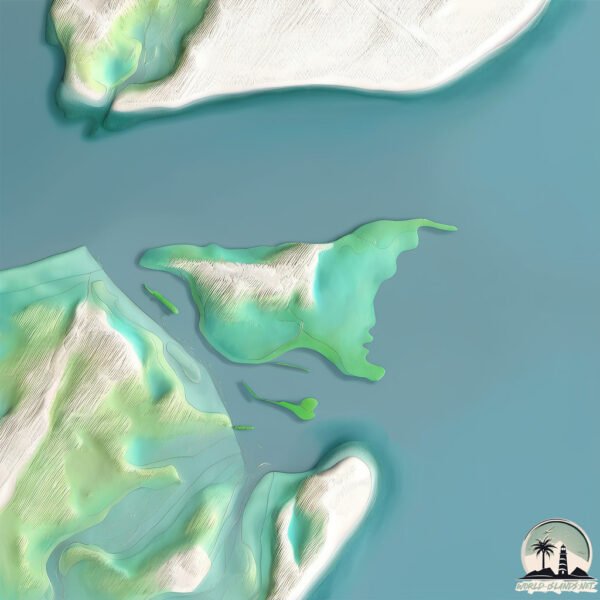Welcome to Buzio , a Tropical island in the Mozambique Channel, part of the majestic Indian Ocean. This guide offers a comprehensive overview of what makes Buzio unique – from its geography and climate to its population, infrastructure, and beyond. Dive into the details:
Geography and size of Buzio
Size: 6.804 km²Coastline: 18.9 kmOcean: Indian OceanSea: Mozambique ChannelContinent: Africa
Buzio is a Small Island spanning 6.8 km² with a coastline of 18.9 km.
Archipel: –
Tectonic Plate: Australia – A major tectonic plate covering Australia, New Zealand, and parts of the Indian and Pacific Oceans, known for its relative stability and occasional seismic activity.
The geographic heart of the island is pinpointed at these coordinates:
Climate and weather of Buzio
Climate Zone: TropicalClimate Details: Tropical Savanna, WetTemperature: Hot
Climate Characteristics: Defined by distinct wet and dry seasons with high temperatures year-round. Pronounced rainfall occurs during the wet season, while the dry season is marked by drought.
Topography and nature of Buzio
Timezone: UTC+02:00Timezone places: Africa/JohannesburgMax. Elevation: 2 m Mean Elevation: 0 mVegetation: Mangrove ForestTree Coverage: 44%
The mean elevation is 0 m. The highest elevation on the island reaches approximately 2 meters above sea level. The island is characterized by Plains: Flat, low-lying lands characterized by a maximum elevation of up to 200 meters. On islands, plains are typically coastal lowlands or central flat areas.
Dominating Vegetation: Mangrove Forest
Vegetation: 5 vegetation zones – Highly Diverse Island
Infrastructure and Travelling to Buzio
Does the island have a public airport? no .
Does the island have a major port? no .
The mean population of Buzio is 310 per km². Buzio is Moderately Inhabited. The island belongs to Mozambique .
Continuing your journey, Angoche is the next notable island, situated merely km away.
BUZIOS TRAVEL GUIDE | Brazil's Affluent Beach Town
Buzios is definitely a must if you come to Brazil. This beautiful and affluent beach town is just a 3hr drive from Rio de Janeiro and ...
BUZIOS TRAVEL GUIDE | Brazil's Affluent Beach Town
Buzios is definitely a must if you come to Brazil. This beautiful and ...
Buzios is definitely a must if you come to Brazil. This beautiful and affluent beach town is just a 3hr drive from Rio de Janeiro and ...
Welcome to designing your travels, in this video we will guide you ...
Welcome to designing your travels, in this video we will guide you through the amazing town called Armação de Buzios, aka ...
Weekend in Búzios – best of Brazil's paradise | TRAVEL GUIDE & TOP BEACHES
Travel guide for a weekend in Búzios, backpacking on a budget. Which ...
Travel guide for a weekend in Búzios, backpacking on a budget. Which are the most beautiful beaches – and which is the best ...
Mozambique is classified as Least developed region: Countries that exhibit the lowest indicators of socioeconomic development, with the lowest Human Development Index ratings. The level of income is Low income.
News – Latest Updates and Headlines from Buzio
Stay informed with the most recent news and important headlines from Buzio. Here’s a roundup of the latest developments.
Loading...
Please note: The data used here has been primarily extracted from satellite readings. Deviations from exact values may occur, particularly regarding the height of elevations and population density. Land area and coastline measurements refer to average values at mean high tide.

